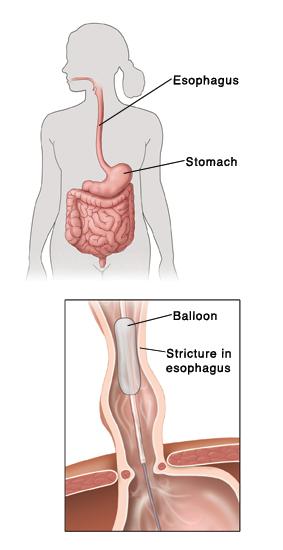
Dilatation
Esophageal dilation is a medical procedure performed to widen a narrowed or constricted portion of the esophagus The dilation procedure aims to improve swallowing and alleviate symptoms associated with esophageal narrowing.
There are different techniques used for esophageal dilation, including:
- Balloon dilation
- Bougie dilation
- Endoscopic incisional therapy
Why and when is it done
Esophageal dilation procedures are performed to address esophageal strictures or narrowing of the esophagus.
- The most common indication for esophageal dilation is difficulty swallowing, known as dysphagia
- Esophageal strictures can be caused by various conditions, including GERD, Eosinophilic Esophagitis, Peptic Ulcer Disease, Radiation Therapy, Surgical Scarring
- For diagnostic and therapeutic procedures
Benefits of Dilatation
- The primary goal of esophageal dilation is to improve swallowing ability and alleviate dysphagia
- Esophageal strictures can cause discomfort, pain, and the inability to eat or drink properly. Esophageal dilation aims to alleviate these symptoms
- Restoration of nutritional intake
- Esophageal dilation is typically performed using endoscopic techniques, which are minimally invasive for quicker recovery
- Reversible and repeatable procedure
Risks associated with Dilatation
While esophageal dilation procedures are generally considered safe, there are potential risks and complications associated with the procedure.
- Immediate bleeding during the procedure
- Esophageal injury or perforation during the procedure
- Risk of infection
- Adverse reaction to sedation and anesthesia
How is the procedure performed
During an dilation procedure, the following steps are typically involved
- Fasting is mandatory for clear view during surgery and low risk of infection. You may also receive sedation or anesthesia to help you relax and minimize any discomfort.
- An anesthetic spray will be used to keep your mouth open along with mouth guard
- The endoscope is inserted into your mouth to visualize the narrowed area structure
- Once the stricture is identified, the doctor will choose an appropriate dilation method based on the severity and location of the stricture
- After careful evaluation, the endoscope will be removed and post procedure instructions to be followed.
